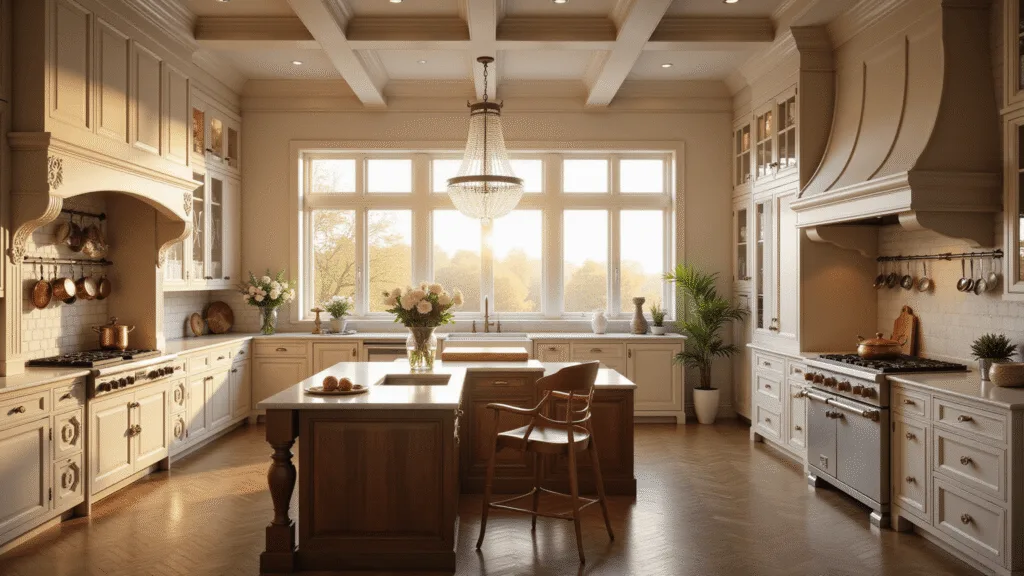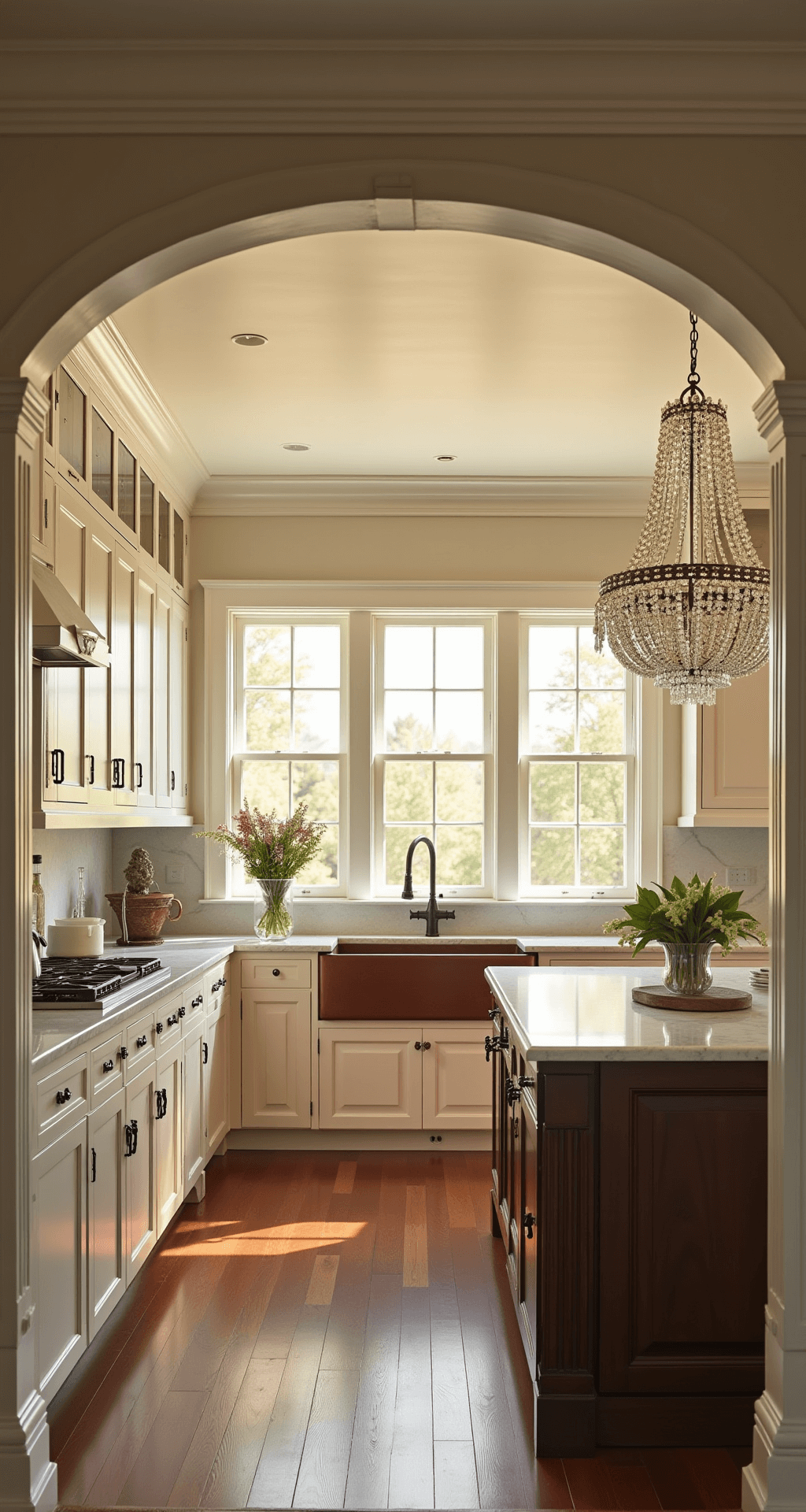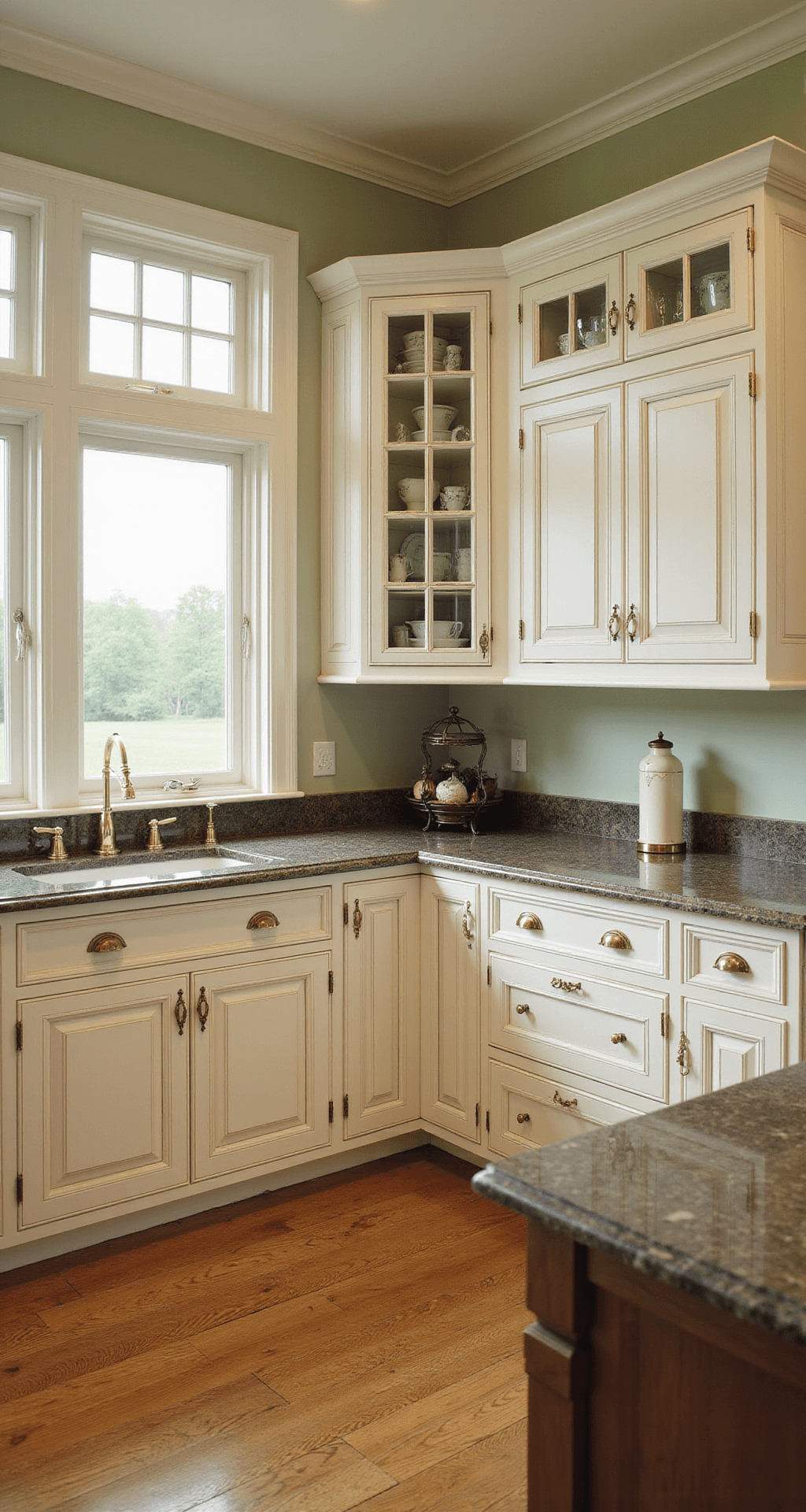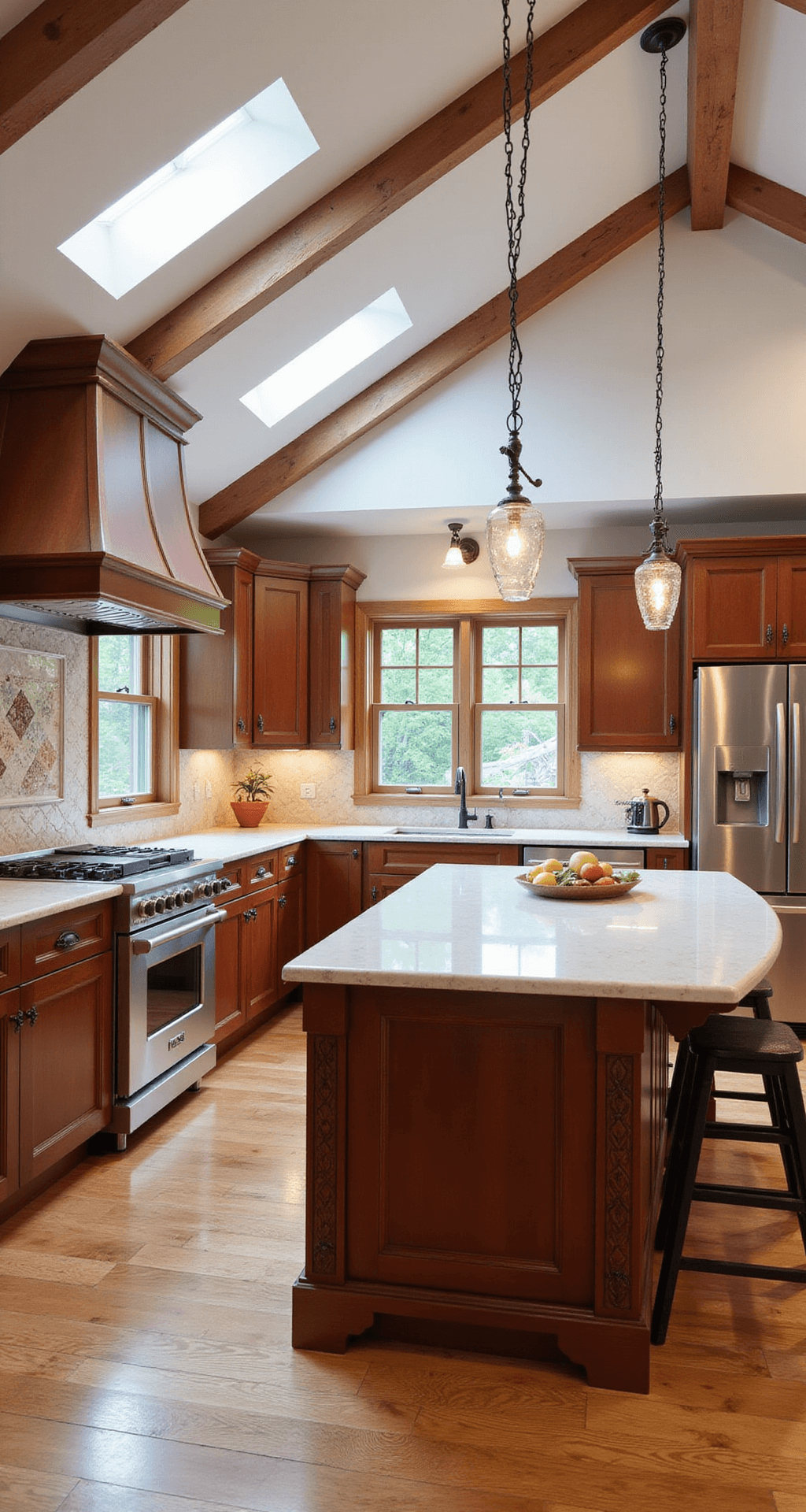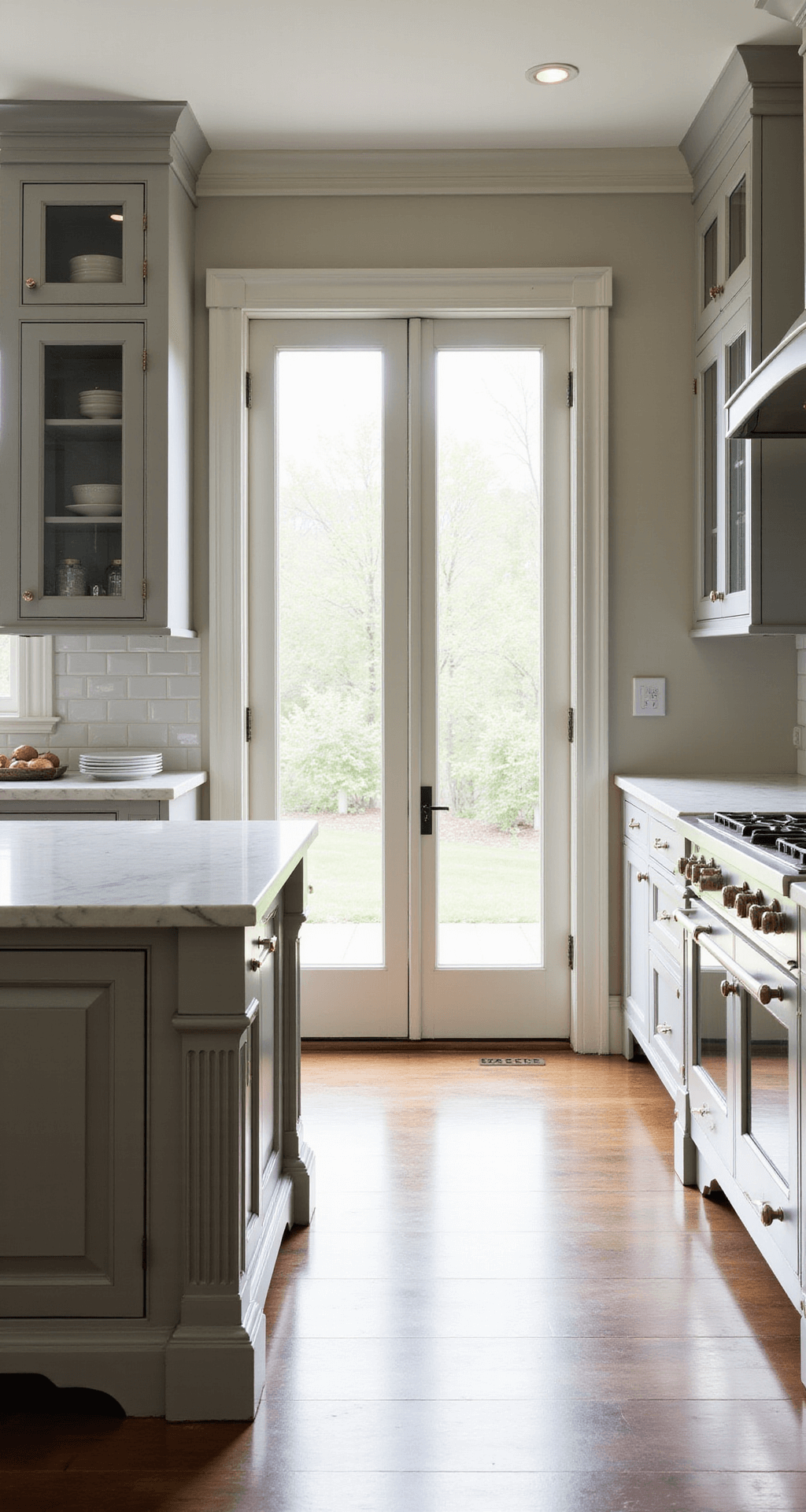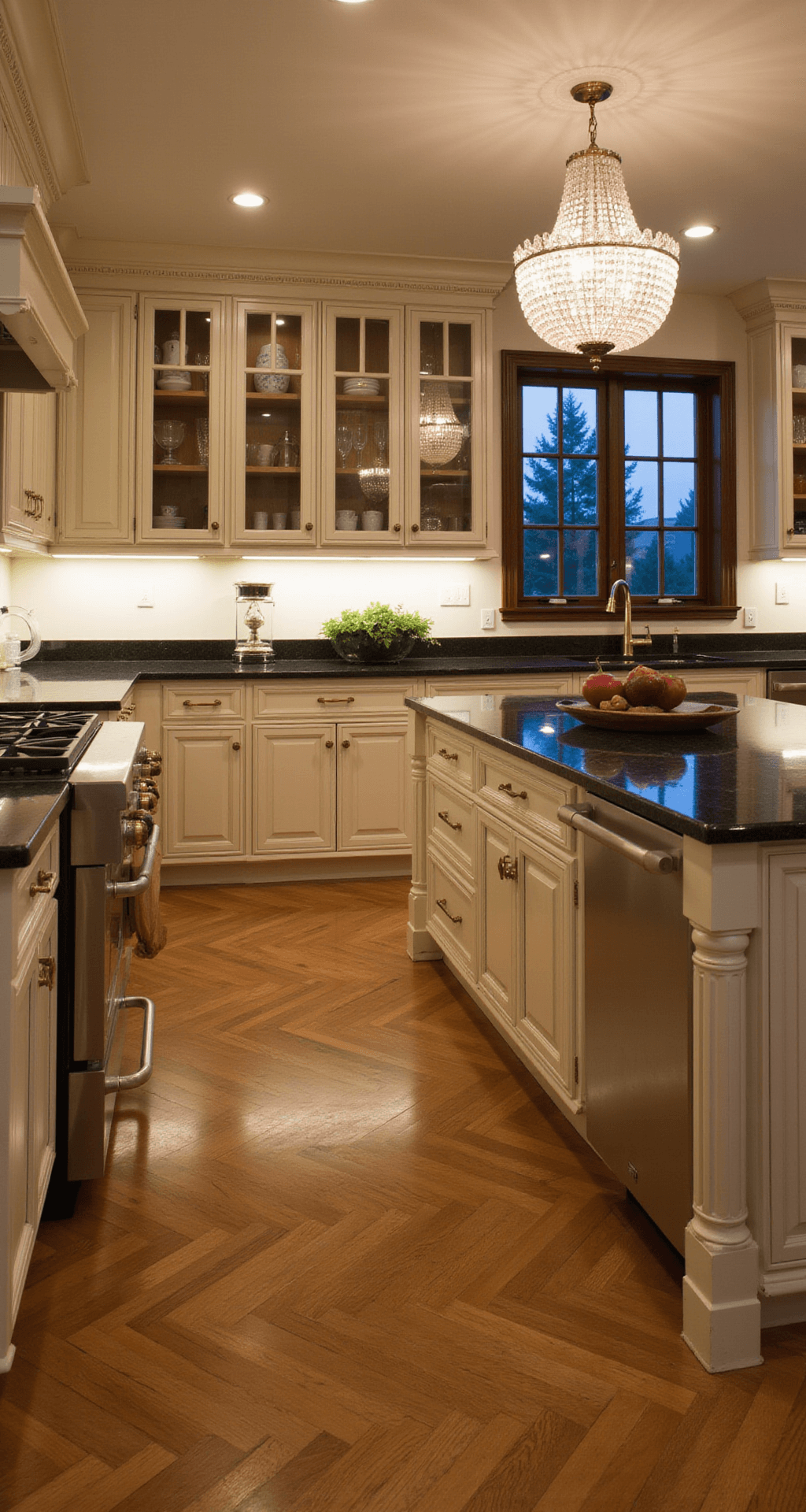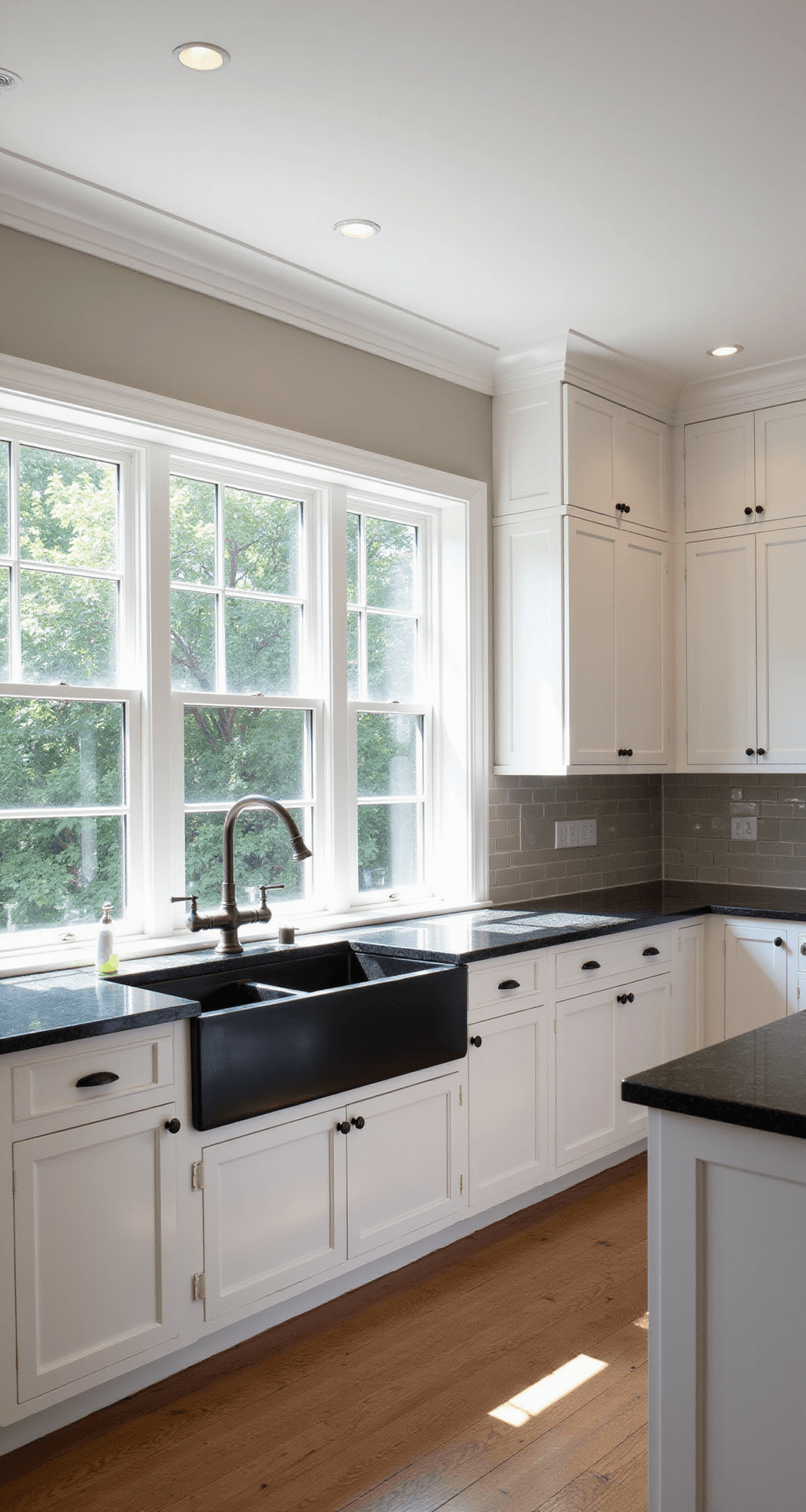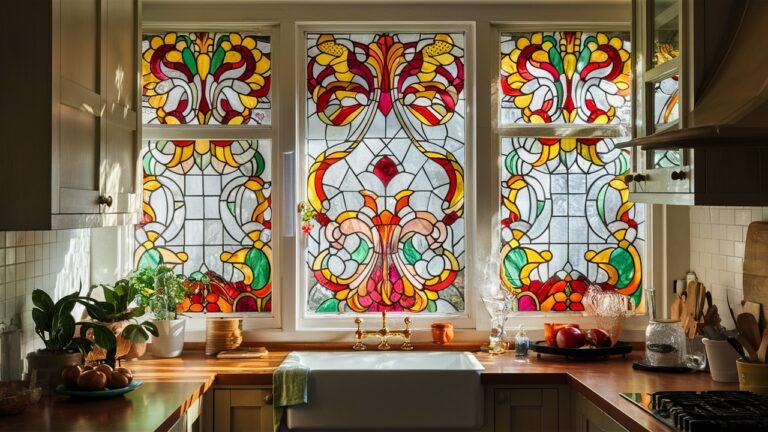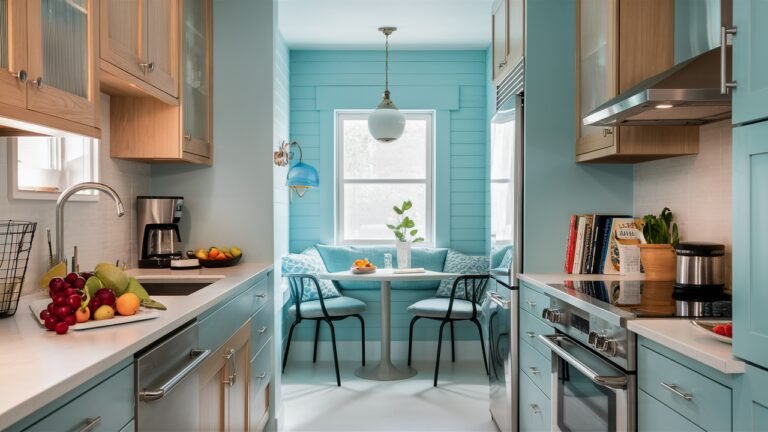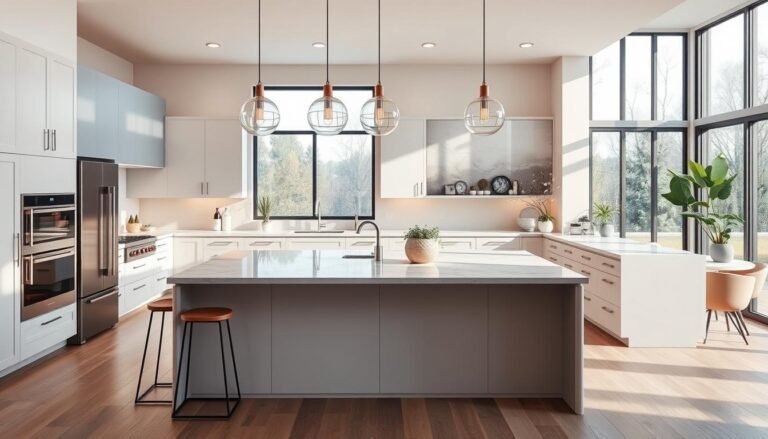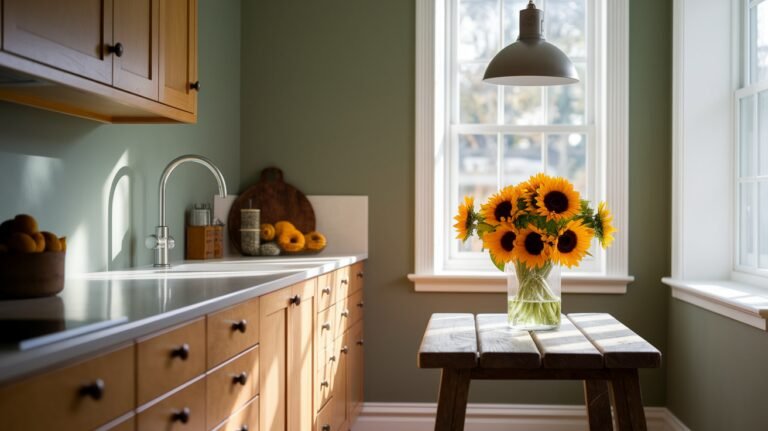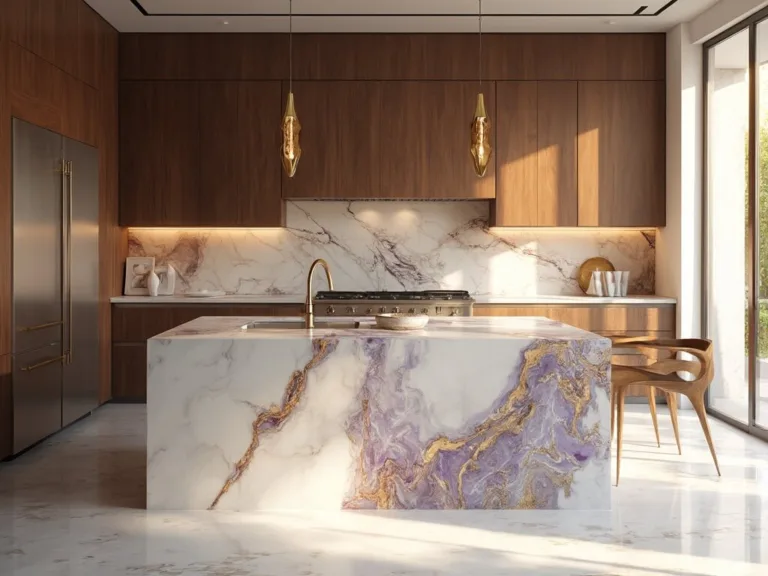This post may contain affiliate links. Please see my disclosure policy for details.
Traditional Kitchen Design: Crafting a Timeless Culinary Haven
Contents
Ever walked into a kitchen that feels like a warm, elegant embrace from the past? That’s the magic of a traditional kitchen design.
Traditional kitchens aren’t just rooms—they’re storytelling spaces that blend historical charm with functional beauty. Let me break down everything you need to know about creating a kitchen that whispers sophistication and comfort.
What Makes a Kitchen “Traditional”?
A traditional kitchen is defined by:
- Ornate cabinetry
- Natural, high-quality materials
- Intricate architectural details
- A welcoming, timeless ambiance
Essential Design Elements
1. Cabinetry: The Heartbeat of Traditional Design
Forget plain cupboards. Think furniture-grade masterpieces.
Key cabinet characteristics:
- Raised or recessed panel doors
- Optional glass inserts
- Decorative moldings
- Furniture-style legs
- Ornate handles
- Detailed trim work
2. Material Magic: Natural is Always in Style
Traditional kitchens worship natural materials like royalty.
Preferred materials include:
- Stained or painted wood cabinetry
- Stone countertops (granite, marble, soapstone)
- Hardwood or stone flooring
3. Color Palette: Warmth and Elegance
Neutral doesn’t mean boring—it means sophisticated.
Color strategy:
- Whites
- Creams
- Beiges
- Soft earth tones
- Occasional muted accent colors
4. Architectural Details: The Devil’s in the Details
Enhance your kitchen with:
- Crown molding
- Wainscoting
- Corbels
- Pilasters
- Fluted columns
5. Standout Features
Transform your kitchen from functional to phenomenal:
- Apron-front (farmhouse) sink
- Classic countertop edges
- Elevated tile backsplashes
- Vintage-inspired hardware
- Elegant lighting fixtures
Pro Design Tips
Make your traditional kitchen sing:
- Mix textures thoughtfully
- Layer decorative elements
- Choose quality over quantity
- Prioritize craftsmanship
- Embrace historical design references
Hardware and Fixture Selection
Choose metals that tell a story:
- Brass
- Oil-rubbed bronze
- Antique metals
Lighting: Setting the Mood
Create warmth with:
- Crystal chandeliers
- Wrought iron pendants
- Classic glass fixtures
- Traditional sconces
Common Mistakes to Avoid
❌ Don’t:
- Overcrowd the space
- Ignore functionality
- Choose trendy over timeless
- Skimp on quality materials
✅ Do:
- Invest in craftsmanship
- Balance aesthetics with practicality
- Respect historical design principles
- Create a cohesive look
Budget Considerations
Traditional kitchens can range from modest to luxurious. Key investment areas:
- Cabinetry
- Countertops
- Architectural details
- Quality hardware
Pro Tip: You can achieve a traditional look at various price points by selecting strategic, high-impact elements.
Final Thoughts
A traditional kitchen is more than a cooking space—it’s a sanctuary that honors craftsmanship, comfort, and timeless elegance. Whether inspired by English estates, French chateaus, or Tuscan villas, your kitchen can become a beautiful narrative of design and function.
Embrace the details, respect the traditions, and create a space that feels like home.

